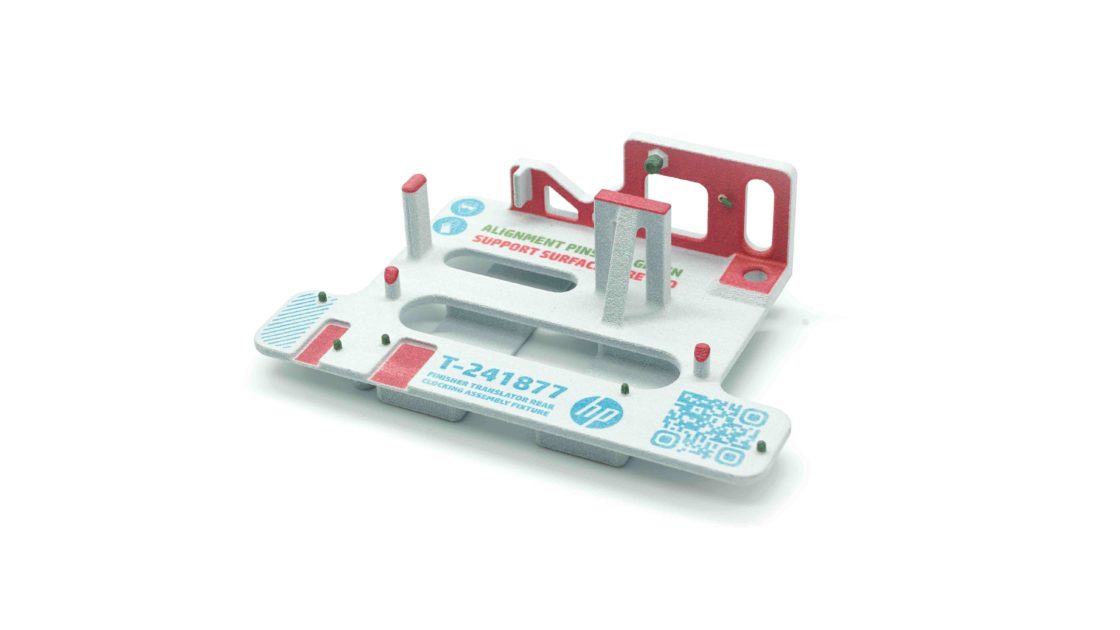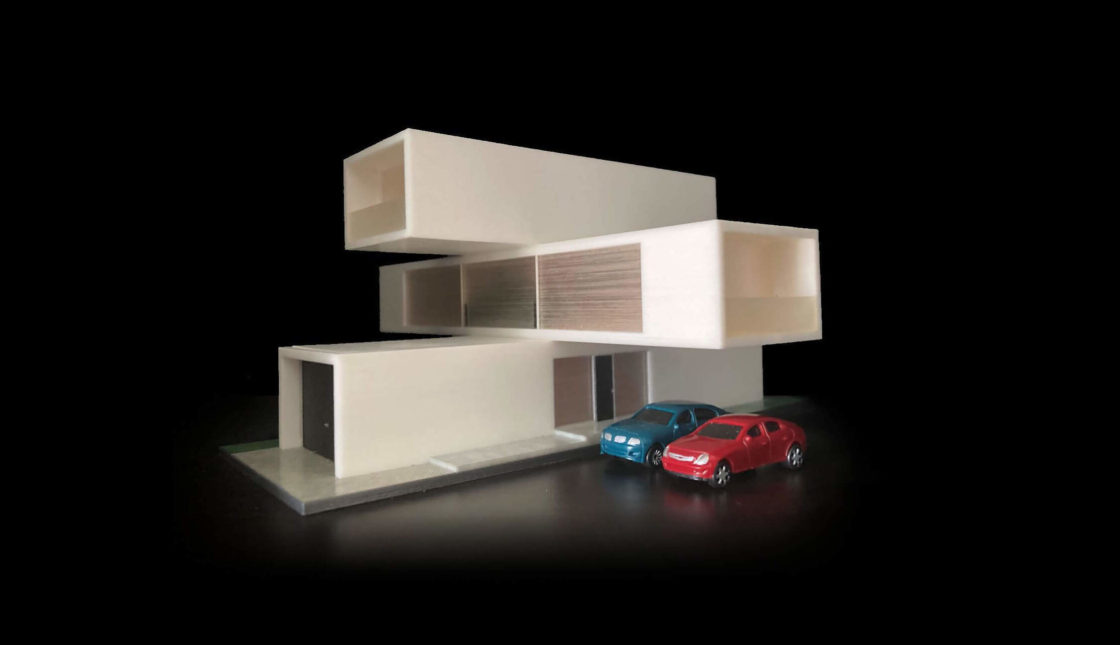
Excellence in design should translate to excellence in products–there must be an understanding of the manufacturing process, 3D printing materials, and technology.
3D printing infiltrated the mainstream in 2014 as patents began to expire on technology like Stereolithography (SLA) and Selective Laser Sintering (SLS). While how to 3D print layer-by-layer–adding material to build a structure rather than subtracting–has become common knowledge, many are not aware that the technology was predicated on improving and accelerating product development. Additive manufacturing has exploded into a multi-tiered service industry.
Designers and engineers are able to perfect sophisticated parts, whether in rapid prototyping or end-use manufacturing–and down to the most specific needs from beginning to end–whether they are wondering how does a 3D printer work, overall, how to make clear 3D prints or ultimately, how to finish 3D prints.

How to Design a 3D Model for Uploading–and Successful Manufacturing
Excellence in part development boils down to good planning and good choices, from building in desirable features and functionality to analyzing and launching quality products. 3D printing design guidelines play a critical role, but technique is just as important.
Traditional manufacturers seeking ways to streamline production may wonder how 3D printing works, and may not be sure where to start or how to design for 3D printing. It’s all in the details. Designers must research the best materials and technology for their designs, prioritizing strong geometries with crucial elements like proper wall thicknesses and suitable textures. 3D printing orientation strength is integral to part quality too, as a principal parameter for accuracy. Responsible for how the part will rotate within a 3D printing build space, orientation supports success in printability, and is directly related to strength, accuracy, and surface quality.
Analysis regarding printability is one of the most important steps after a customer is ready to upload a 3D model. Although customers upload most models with ease, there may be 3D printability challenges requiring additional attention.
“We are able to help regenerate many 3D models with compatibility issues,” says Angeliki Sioliou, User Application Design Specialist at Shapeways. “We are able to offer customized feedback, redirecting how to 3D print models that may have originally been set for materials not compatible with complex geometries.”
Once a 3D model is uploaded, Shapeways and the UA team are invaluable to businesses exploring advanced 3D printing materials and technology, moving forward to manufacture market-ready products that can be shipped directly to the company or to their customers in white-label packaging.

From a 3D Model to a Rapid Prototype–Accelerated Feedback and Testing with Additive Manufacturing
Promoting greater independence and speed in taking a product from the concept phase to manufacturing, 3D printing is a valuable tool for companies seeking quality and the ability to get to market faster. 3D printing prototypes aid manufacturers in nailing down their final designs, part optimization, reducing cost, and decreasing the number of components in one assembly.
Some Shapeways customers work on simplified projects that require a handful of 3D printed rapid prototypes and iterations, while others need to create well over a hundred 3D printed iterations. Shapeways customer Tilt Hydrometer fell into the latter category when perfecting their electronic device for monitoring fermentation in homebrewing. They also serve as a great example of a growing trend leading Shapeways customers to rapid prototype with a material like Nylon 12 [Versatile Plastic] and then go on to use the same resources and technology for final production of end-use parts. In this case, the Tilt Hydrometer team learned about compatibility of materials and technology and utilized the range of colors available to differentiate between their sensors.
3D printing materials like Multi Jet Fusion Plastic PA12 are used in rapid prototyping for high-performance, functional parts requiring high strength and accuracy, along with the same type of design freedom. Multi Jet Fusion technology is also extremely well-adapted for industrial 3D printing of prototypes and parts because of precision, superior surface finish, and texture. For prototypes that require finer details and even greater accuracy, designers and engineers often turn to materials like Accura 60, Accura Xtreme, or Accura Xtreme White 200 with SLA 3D printing.

From Thermoplastics to Metal 3D Printing: Understanding the Process
Shapeways helps customers achieve their vision with advanced 3D printing materials and technology, as well as offering traditional manufacturing services when needed. Following are answers to some typical questions and concerns in 3D printing.
How strong is 3D printed plastic?
Nylon plastics continue to reign for industrial manufacturing. Nylon 12 [Versatile Plastic] is one of the most popular 3D printing materials in industrial applications, offering extreme durability, high tensile strength, abrasion resistance, and thermal stability.
Nylon 12 [Versatile Plastic], 3D printed with Selective Laser Sintering, is also aptly named due to its high ductility, allowing for flexibility when 3D printing thinner structures but a rigid nature when 3D printing thicker parts.
How are thermoplastic 3D printing materials typically finished?
Customers using popular materials like Nylon 12 [Versatile Plastic] can take advantage of a range of finishes:
- Natural – a slightly rough surface and a matte finish.
- Processed – removes some material to create a smoother finish.
- Premium – a smooth finish with good scratch resistance.
- Smooth – the ultimate smooth finish created using a physio-chemical vapor process.
How are 3D printed parts smoothed and colored?
The vapor smoothing process can even smooth internal cavities, creating an entirely smooth, semi-shiny, watertight part. Very little material is removed during vapor smoothing, maintaining each part’s structural integrity after post-processing.
Dyeing of 3D printed parts is also possible with Nylon 12 [Versatile Plastic]. Featuring a naturally white color, products can be dyed in the following hues: Black, Blue, Green, Orange, Pink, Purple, Red, and Yellow. Dyeing is helpful in making designs pop with vibrant colors, but also in differentiating parts in applications like electronics.
How do metal 3D printers work and how do laser cutters work with them?
Metal 3D printers must be powerful enough to produce parts made with high-strength metals, fusing the powder together to meet stringent industrial standards and requirements. Laser cutting systems often accompany 3D metal printing by using a motion control system to cut or vaporize certain pieces during manufacturing.
What can you 3D print with metal?
Alloys like Aluminum (AlSi10Mg), 3D printed with Selective Laser Melting (SLM), are useful for applications that require thermal and electrical conductivity, along with durability, stiffness, and high accuracy. Shapeways also recommends the durability of Steel, Stainless Steel 17-4 PH, and Stainless Steel 316L.
How are 3D printed parts finished with metal?
If you are wondering how to finish 3D printed parts, in metal, Shapeways offers a wide range of options for Steel in a polished finish, including the following colors:
- Bronze
- Gold
- Nickel
- Bronzed-Silver
- Black
A variety of finishes and polishing options are also available for 3D printing with precious metals and Wax Casting. Designers choosing finishes or polishes for precious metals like Sterling Silver may choose from the following:
- Natural – light polishing for a matte, but somewhat rough surface.
- Polished – hand-polishing for a smooth, shiny surface.
- Fine Detail Polished – extensive polishing for intricate details, achieving a very shiny surface. Extra polish could remove material though, meaning that finer details are lost during the process.
- Antique – recessed details are blackened to achieve a steampunk look.

Industrial 3D Printing and Corresponding Applications
Industrial manufacturers enjoy and rely on the benefits of rapid prototyping for high-performance parts, but additive manufacturing has become integral to production in an impressive number of applications.
The aerospace industry continues to embrace 3D printing, especially as related technology like drones trends upward in popularity. Relying on 3D printing for prototyping and final production, Shapeways customer Quantum-Systems must prioritize how a drone is designed, outfitted, and how much it will weigh. Taking advantage of one of the greatest benefits in 3D printing with the ability to make strong yet lightweight parts, drone manufacturers are partnering with Shapeways for prototyping and end-use manufacturing. For 3D printed drones, they often favor materials like Nylon 12 [Versatile Plastic] and MJF PA12 for manufacturing essential parts like 3D printed drone mounts.
The medical industry is also being impacted tremendously, and 3D printed medical models are being used routinely in hospitals and clinical settings; for instance, a 3D printed medical model allows for more accurate diagnosis, advanced guidance in treatment, and serves as an effective visual aid to educate about medical conditions and upcoming procedures. Customers like Armor Bionics partner with Shapeways for converting medical data into 3D printed medical models that they refer to as ‘GPS for surgeries,’ allowing doctors to plan and train for complicated surgeries.
Shapeways recommends materials like High Definition Full Color, produced via Material Jetting (MJ) technology, offering an array of ten million colors for 3D printing photorealistic medical models and representing human organs in exacting detail. Other 3D printing materials like Nylon 12 [Versatile Plastic] and MJF PA12 are also suitable for medical models, offering strength and durability for parts made in black or gray.
Other applications relying on 3D printing include:

How 3D Printing Leads to Successful Scaling for Manufacturers
With numerous factors to consider such as developing new products, controlling the budget, providing fast turnaround times, and dealing with all aspects of customer service, traditional manufacturers turn to 3D printing. Additive manufacturing allows for greater flexibility and freedom in design, the ability to make countless iterations quickly and inexpensively, and to innovate like never before. Custom parts can be made with almost no costs upfront, with only a digital file required for the 3D model. Added benefits include less material used and ease in recycling powder from certain technologies.
About Shapeways
Enjoy the benefits of this advanced technology and a wide range of materials from Shapeways for 3D printing your creations with accuracy, complex detail, and no minimum or limits in terms of mass customization or single part orders. Shapeways has worked with over 1 million customers in 160 countries to 3D print over 21 million parts! Read about case studies, find out more about Shapeways additive manufacturing solutions, and get instant quotes here.


